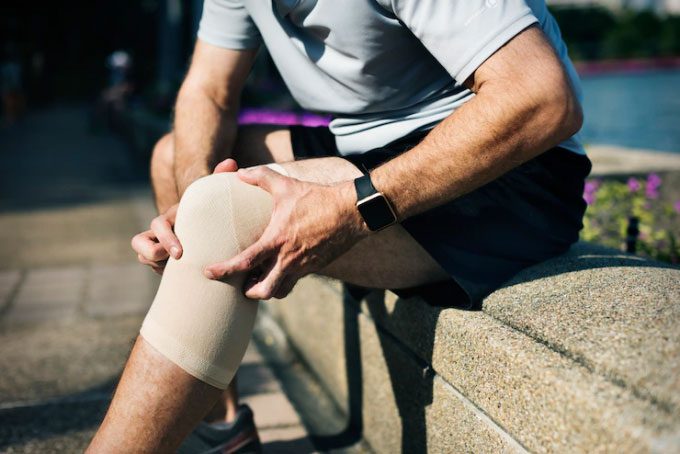Poor blood circulation, tissue dilation, low physical activity, and weight gain are factors that can exacerbate knee pain as the weather changes.
Dr. Tăng Hà Nam Anh, Director of the Orthopedic Trauma Center at Tâm Anh General Hospital in Ho Chi Minh City, explains that cold weather can trigger knee joint pain in all individuals. However, in older adults or those with pre-existing conditions such as knee arthritis, osteoarthritis, gout, or previous knee injuries, the sensation of pain during colder weather is often more pronounced.

Cold weather increases the severity of knee pain. (Photo: Freepik)
Firstly, cold weather causes blood vessels around the knee joint to constrict, which reduces blood flow to the knee. The synovial membrane and subchondral bone of the knee joint do not receive adequate nourishment, leading to irritation and the onset of pain.
Cold weather also brings lower atmospheric pressure, which causes tissues, fluids, and gases around the knee joint to expand, putting pressure on the nerves and resulting in discomfort and pain. Additionally, to adapt to the cold, the body attempts to regulate internal temperature by contracting muscles. This muscle contraction reduces the oxygen supply to the muscle fibers surrounding the knee, causing stiffness and decreased flexibility, thereby increasing the sensation of pain in the knee.
Particularly during the frigid winter months, most people tend to be less active, whether in leisure activities or physical exercise. Inactivity prevents joint cartilage from absorbing sufficient nutrients, leading to decreased elasticity and resilience, which heightens knee pain during movement. Furthermore, inactivity is also a significant reason many individuals experience uncontrolled weight gain. Surveys indicate that people may gain an average of 2.3 to 3.2 kg during the winter months. Each additional 0.5 kg of weight increases the pressure on the knees by approximately 1.8 kg. The added pressure from excess weight is another cause of heightened knee pain in cold weather.
For those who have previously suffered from arthritis or knee surgery, cold and humid weather can make the nerves around the knee more sensitive than usual. At this point, even a minor external force can cause many individuals to feel significantly more knee pain than on warmer days.
To alleviate knee pain when the weather turns cold, Dr. Nam Anh advises patients to keep their entire body warm to promote blood circulation to the joints. For the knees, when going outside or exercising, using knee braces or wraps can help maintain warmth and reduce external impact on the knee joint.
When experiencing knee pain, many people tend to adopt a “lazy” attitude towards movement, believing that activity will worsen the pain. However, complete rest can lead to poor nutrient absorption by the joint cartilage, causing it to become dry and stiff, which increases the risk of joint pain. Therefore, on cold days, instead of running or cycling outdoors, individuals can practice indoors with gentle exercises such as yoga or walking on a treadmill…

Maintaining an exercise routine helps improve and prevent knee pain in winter. (Photo: Freepik)
Taking warm baths and massaging the knees with hot ointment can also effectively soothe knee joint pain in cold weather. Additionally, it is essential to drink enough water to ensure joint hydration, maintaining flexibility and reducing wear on cartilage and subchondral bone. Research suggests that the ideal water intake per day can be based on a standard of 40 ml/kg of body weight, with a preference for warm water during winter.
If individuals have implemented the aforementioned measures but still experience knee pain, it is advisable to consult specialists to accurately identify the cause and establish an appropriate treatment plan, Dr. Nam Anh recommends.


















































